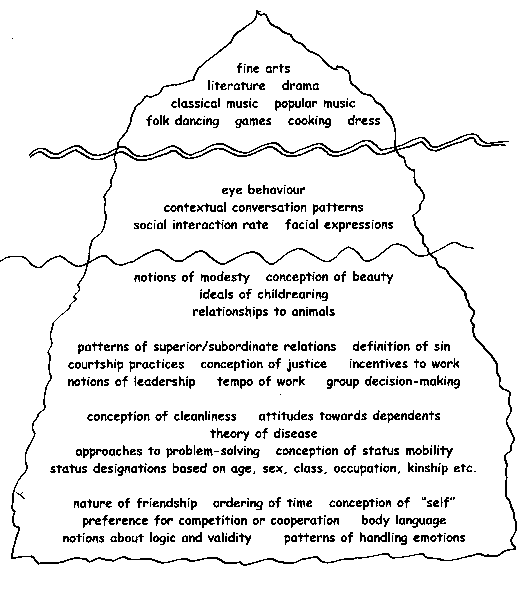Cultural differences
This graphic from Dr. Else Hamayan shows that there is more to culture than meets the eye!

Two of these terms are explained by E. Hamayan (personal communication) below:
"Social interaction rate usually refers to the amount of social interaction that is acceptable/normal for a group of people. In some societies (some Native American groups, for example), the norm is very little social interaction. It is not uncommon to have long silences in discussions, and many people have reported quite comical situations of Native American with Anglo American interactions, where the Native Americans sit around in silence, and the more they do so, the more the Anglos chatter away because they feel so uncomfortable with silence in the middle of conversations."
"Contextual conversation patterns refer to the different types of interactions that are typical in different contexts. For example, in the US culture, meeting your neighbor in the supermarket requires no more than the superficial "Howdy, how about this weather?" type of interaction, whereas in the Middle East, that context would require a lengthy personal interaction."
For a more detailed account of cultural differences, particularly how they can make the accurate assessment of ESL students more difficult, see:
Practical considerations for the assessment of LEP students Landurand, P. & Chamberlain, P. 1991. In: Limiting Bias in the Assessment of Bilingual Students E. Hamayan & J. Damico (eds.) Austin, TX:Pro-Ed.